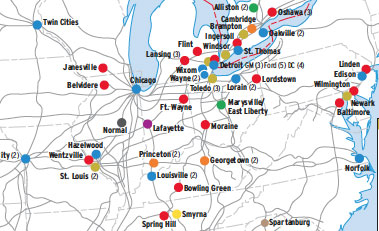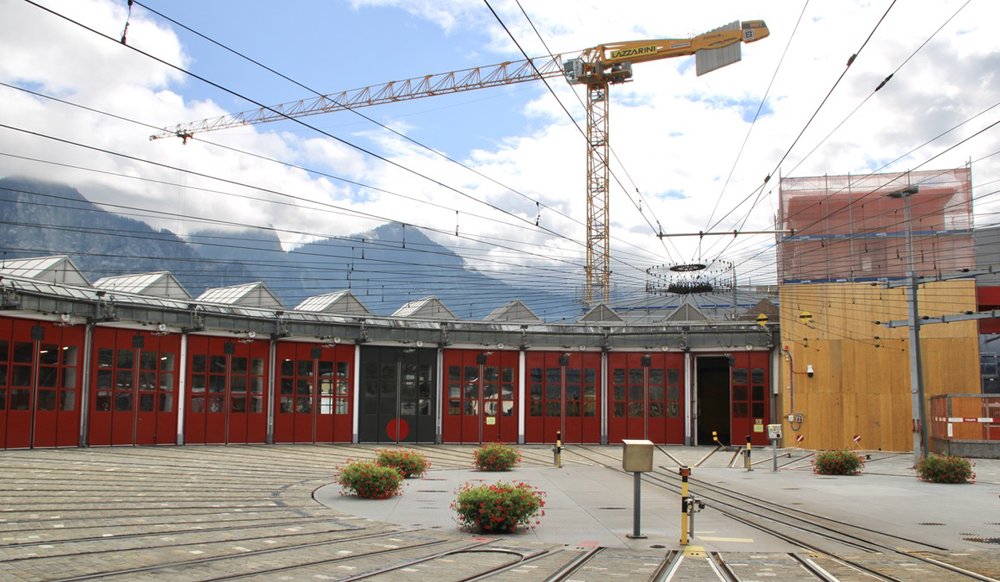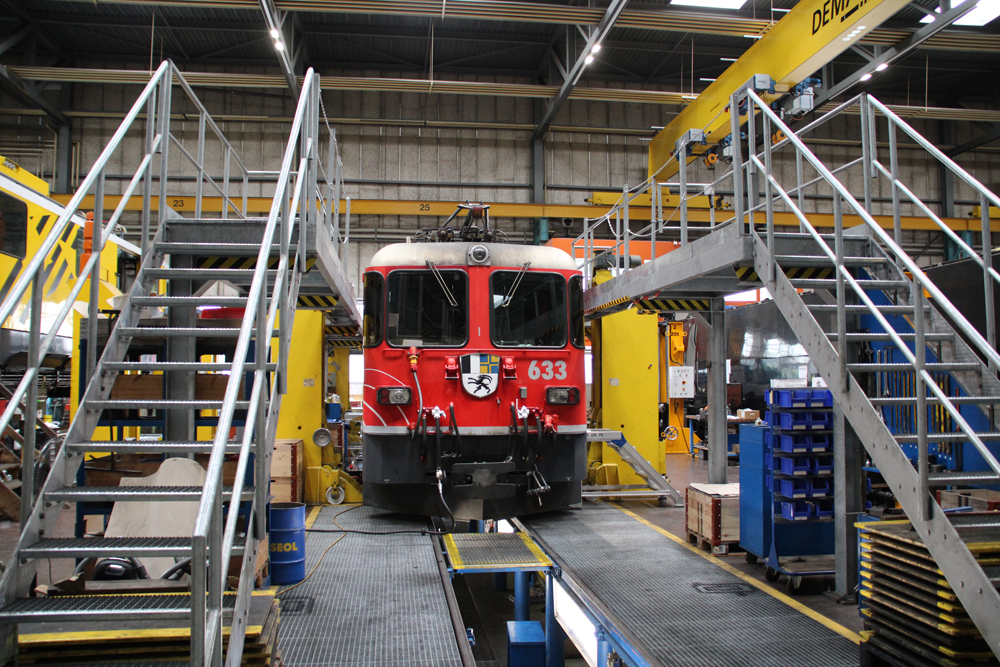In the early 2000s, North America’s 88 automobile assembly plants produced about 15 million new cars and trucks a year. And railroads moved 70 percent of the vehicles built in the United States alone. Most Canadian and U.S. plants are concentrated in a wide corridor stretching from Toronto to Mobile, Ala. Plants in Mexico are clustered near Mexico City and Monterrey.
As consumer demand in the 2000s shifted from cars to SUVs, trucks and minivans, automakers closed or retooled older plants, and opened new plants capable of building more than one model on an assembly line. Plants on the fringes of the continent were most frequently targeted for closing, while Michigan and Southeastern states saw the most new plant construction.
Aggressive recruitment, low utility costs, available land and labor, nearby parts suppliers, and access to Interstates and railroads have spurred development in the South. “Tennessee is within one day’s drive of 75 percent of all U.S. markets, and its road system is one of the best in the nation” noted Ward’s Auto World in a 2002 story.
Railroads haul vehicles in autoracks. An 89-foot trilevel holds 15-18 cars; an 89-foot bilevel holds 10 light trucks, vans, or SUVs; new 2-unit articulated racks hold around 20 trucks or SUVs.
Railroads included in this map:
BNSF Railway, Canadian National, Canadian Pacific, Conrail, CSX Transportation, Kansas City Southern, Norfolk Southern, Union Pacific














